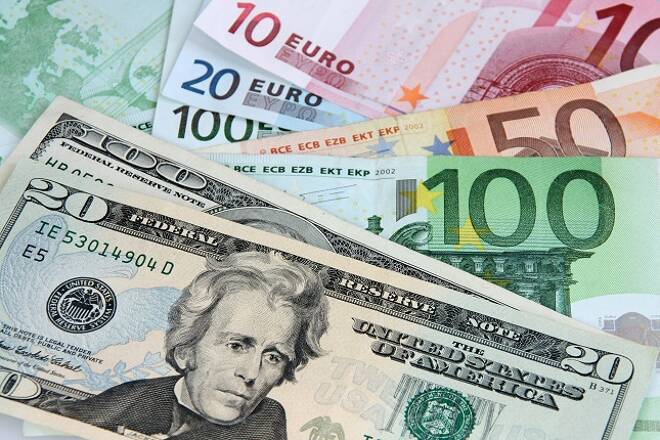Advertisement
Advertisement
EUR/USD Daily Technical Analysis for December 19, 2017
By:
The EUR/USD Consolidates Following Subdued Eurozone Inflation
A risk-on theme pulsed through European stock markets and while EGB yields were mixed, peripheral yield spreads relative to the Bund narrowed. Portuguese bond yields dropped notably after Fitch Ratings announced a two-notch upgrade to the former bailout country’s sovereign debt. Investors are still reacting to last week’s less hawkish than expected guidance from the Fed, ECB, and BoE, while there are widespread expectations for Republicans to push through its corporate-friendly tax overhaul as soon as Wednesday. Also in the mix has been stronger-than-expected export data out of Japan, which rose 16.2% year over year, coupled with a key quarterly business survey in Japan finding that there remains a strong consensus for benign inflationary conditions to remain. Final Eurozone November HICP inflation was confirmed at 1.5% year over year.
Technicals
The EUR/USD whipsawed but traded in a tight range coming off the highs of the session following the final Eurozone November inflation figures. Prices initially pushed through resistance but was unable to hold elevated levels, above the 10-day moving average at 1.1784 which is seen as resistance. Support is seen near an upward sloping trend line that comes in near 1.1691. Momentum is neutral as the MACD (moving average convergence divergence) histogram prints in the red, with a flat trajectory which reflects consolidation.
Final Eurozone Inflation was Higher
Final Eurozone November HICP inflation was confirmed at 1.5% year over year, as had been widely anticipated, lifting from 1.4% year over year in the previous month, but still well off the ECB’s objective for price stability. The breakdown confirmed that the uptick was entirely due to a renewed acceleration in energy price inflation, fitting into the dovish-leaning narrative of ECB President Draghi. Draghi has been continuing to stress that overall wage growth remains unsatisfactory, too, despite improvements on the labor market. The Bundesbank, in contrast, has been warning about the risk of significant wage increases, at least in Germany, amid signs of growing capacity constraints in the manufacturing sector, and there have been more and more ECB council members arguing that come September next year there won’t be the need for further QE, even if Draghi still shies away from committing to a QE end date.
Political events were relatively positive in Europe last week
The EU and U.K. finally found an agreement that allows Brexit talks to move to the second stage, i.e. talks on trade and transition and Germany’s SPD has agreed to exploratory talks on a renewed cooperation with Chancellor Merkel. The elections in Catalonia on December 21 provide a last focus on the political arena this week, especially as polls suggest a head to head race between the parties in favor and those against independence from Spain. And while on all other fronts nothing else is likely to happen this year, they provide plenty of risk factors for 2018 especially as the election in Italy where anti-EU parties could shake up the landscape, are also coming into focus.
This may explain why ECB officials decided to stick to a dovish message at the last council meeting of the year, although it is pretty clear that the debate on where to go from September 2018 will be a heated one as growth indicators continue to come in higher than anticipated.
Japan’s Tankan Show Subdued Inflation
Japan’s Tankan survey on business inflation expectations showed a continued prognosis of benign price pressures, which offset, at least from a BoJ policy-implications perspective, a forecast-beating 16.2% year over year surge in Japanese exports, which is the latest sign that the Japanese economy is getting back on track under the “Abenomics” policy regime, coupled with robust global growth.
About the Author
David Beckerauthor
David Becker focuses his attention on various consulting and portfolio management activities at Fortuity LLC, where he currently provides oversight for a multimillion-dollar portfolio consisting of commodities, debt, equities, real estate, and more.
Advertisement
